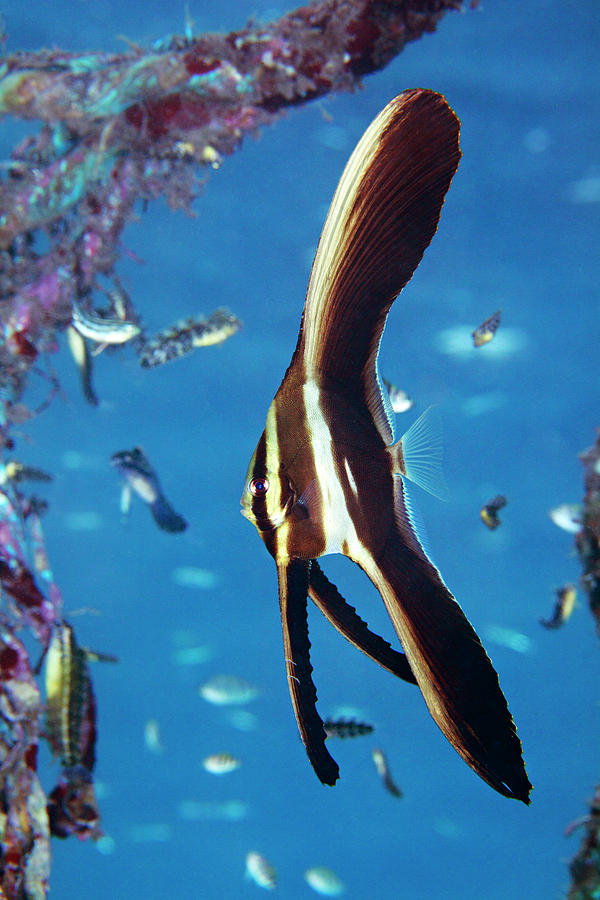Batfish Juvenile
Batfish juvenile is an interesting and unique marine animal. Its distinctive appearance and behavior make it a fascinating subject for study and learning. In this blog post, we will explore the world of batfish juvenile, including its traits, habits, habitat, and more. Whether you are a casual ocean enthusiast or a professional marine biologist, there is something for everyone in this post.
The Pain Points of Batfish Juvenile Habitats
Like many marine animals, batfish juveniles face a number of challenges in their day-to-day lives. These include issues related to climate change, pollution, habitat destruction, and more. While batfish juveniles are resilient creatures, they are not immune to the negative effects of these factors. As such, it is important to be aware of these pain points and to take action to help preserve the habitats of batfish juveniles and other species.
Answering the Target of Batfish Juvenile
The target of batfish juvenile is essentially anyone who is interested in marine life and wants to learn more about this particular species. Whether you are a scuba diver, photographer, researcher, or just someone who loves the ocean, there is plenty to discover about batfish juveniles.
Main Points Summary
In this blog post, we have discussed some of the pain points that batfish juveniles face, as well as their target audience and how to get involved in helping to preserve their habitats. We have also explored the physical characteristics and behavior patterns of batfish juveniles, as well as shared personal anecdotes and insights related to this species.
The Appearance and Behavior of Batfish Juvenile
Batfish juveniles are known for their unique appearance, which includes large, round eyes, a slim body shape, and colorful markings. They are social creatures that often gather in groups, and are typically found in shallow waters near coral reefs and other structures.
One of my favorite experiences with batfish juveniles was when I first encountered them on a scuba diving trip in the Philippines. As our group approached a group of batfish juveniles, they curiously swam closer and closer to us, allowing us to get a fantastic view of their stunning appearance and graceful movements.
The Habitat and Diet of Batfish Juvenile
Batfish juveniles typically live in warm, shallow waters near coral reefs or rocky outcroppings. They feed on a variety of small fish, crustaceans, and other types of marine life. One of the interesting things about batfish juveniles is that they have been known to form symbiotic relationships with other animals, such as sea anemones, where they will clean the anemones in exchange for protection from predators.
Another personal experience I had with batfish juveniles was when I observed a group of them cleaning a sea turtle that had settled near a coral reef. Watching the batfish juveniles swarm around the turtle and work together to remove parasites and other materials was truly fascinating.
Exploring Batfish Juvenile In More Detail
One of the interesting things about batfish juveniles is their ability to change colors and patterns when threatened or excited. They are also known for their ability to communicate with each other through a variety of sounds, such as clicks and pops.
In terms of conservation efforts, there are a number of organizations and initiatives dedicated to preserving the habitats of batfish juveniles and other marine species. These range from beach cleanups and pollution reduction programs to research and education efforts.
The Future of Batfish Juvenile
Overall, batfish juveniles are a fascinating and important species that play a vital role in the marine ecosystem. By learning more about these creatures and taking action to protect their habitats, we can help ensure that they continue to thrive for generations to come.
Question and Answer Section
Q: What is the scientific name of batfish juvenile?
A: The scientific name of batfish juvenile is Platax Pinnatus.
Q: How big can a batfish juvenile grow?
A: Batfish juveniles can grow up to 60 cm in length.
Q: What is the lifespan of a batfish juvenile?
A: The lifespan of batfish juveniles in the wild is not well-known, but they have been known to live up to 25 years in captivity.
Q: Where is the best place to see batfish juveniles?
A: Some of the best places to see batfish juveniles include the Philippines, Indonesia, the Maldives, and other tropical locations with coral reefs and warm waters.
Conclusion
Batfish juvenile is a fascinating and unique marine animal that is worth learning more about. By understanding their traits, behaviors, and habitats, we can better appreciate the important role these creatures play in the ocean ecosystem. Whether you are a casual ocean enthusiast or a dedicated researcher, there is always more to discover about batfish juveniles.
Gallery
Juvenile Batfish Photograph By Dmitry Miroshnikov | Fine Art America

Photo Credit by: bing.com / batfish juvenile dmitry miroshnikov
Greg Lecoeur Underwater And Wildlife Photography | Juvenile Batfish
Photo Credit by: bing.com / batfish juvenile pinnate greg lecoeur photography loading photographer
Juvenile Batfish - YouTube

Photo Credit by: bing.com / batfish
Juvenile Batfish | Creatures Of The Sea | Pinterest
Photo Credit by: bing.com / batfish pinnatus sea platax juvenile ocean creatures fish pinnate life spadefish beautiful jungtier adult fishes starfish keith french via fische
Juvenile Orbicular Batfish | Project Noah
Photo Credit by: bing.com / batfish orbicular juvenile